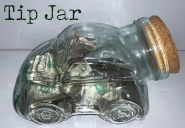

















|
|---|

Publisher: The Crittenden Automotive Library Byline: Bill Crittenden Date: 2 February 2025 Heinrich Heine |
Data Burning Depending on the age of the translation, sometimes it's “where they burn books, they will ultimately burn people, too.” My favorite phrasing is “where they have burned books, they will end in burning human beings.” It's a line Heinrich Heine's play Almansor, published in 1823. The context of the line is best summed up by Shlomo Avineri as “Thus in a play aimed at a German, mainly Christian, audience, Heinrich Heine, born to a Jewish family in Düsseldorf, criticizes Christian Spain for the burning of the Qur’an.” There was a prominent Christian nationalist book burning at Wartburg Castle, in what is now central Germany in 1817. This was followed by anti-Jewish pogroms in major cities. Heine, in 1840, wrote of the time “Illuminated by torches, at Wartburg things were said and done befitting the Middle Ages... A narrow-minded Teutonic spirit reigned there, which spoke loftily of love and faith, but was anchored in a hate of foreigners and their religion. Out of their ignorance the participants could not imagine anything better than burning books.” It's important to remember that Adolf Hitler and the Nazis didn't invent anti-Semitism. They used and amplified a hatred that had existed for centuries to gain power. In this context what appears to be an extraordinary case of predicting the future instead expands the timeline of the events that led to the Holocaust much further back than the average American high schooler will have to learn. Nevertheless, Germans inscribed it upon memorials to the book burnings of May 10, 1933. The book burnings, which peaked on that night, began a few days before with the May 6th sacking of the Institut für Sexualwissenschaft (Institute for Sexual Science). It was a research institute where Magnus Hirschfeld had assembled a library of some of the earliest available writings on gender, homosexuality, and transsexuality. Heinrich Heine's works were among those burned on May 10th. Within a dozen years six million Jews and millions of other “undesirables” were murdered by the Third Reich. Jump forward eighty years, and a bunch of folks who chose Fox News over history class are repeating the same mistakes. This time it is not as dramatic as physically emptying a library into a pile in the middle of a torchlit plaza and lighting a bonfire. But the digital erasure of trans people from U.S. government data archives has begun. A purported Defense Intelligence Agency memo states the agency will no longer acknowledge a range of heritage and rememberance days, including the Holocaust Day of Rememberance. Aside from the usual “I hope my public disapproval of these actions don't land me in a labor camp,” the effects on this administration on the collection and preservation of automotive history are not yet clear. But it's not looking good. Elon Musk appears to have locked members of the Office of Personnel Management (the Human Resources of the federal government) out of their computers and sent a government-wide email offering benefits for any employee willing to leave their job. He now has access to systems that include “a vast database called Enterprise Human Resources Integration, which contains dates of birth, Social Security numbers, appraisals, home addresses, pay grades and length of service of government workers.” As a reminder, Roman salute enthusiast Elon Musk's biggest business is still Tesla, the electric car manufacturer. What will he do to all the data that the National Highway Traffic Safety Administration has gathered, particularly as it pertains to Full Self Driving? If NHTSA's current leadership is purged in favor of adherents to the MAGA agenda, it is certain that any investigations will be over and any resistance to allowing this half-baked technology to run unsupervised on our roads will be gone. But how far will they go in wiping out the rest of the agency and its work? Folks who use EPA data say that information is disappearing from their servers almost daily. A purge of this agency's clean air information would almost certainly include automobile emmissions data. There are other forms of Heinrich Heine's quote. Some add “that was but a prelude.” While it's sad to see books burned and data deleted, I'm much more concerned about what follows if we don't heed history's warnings, and what will be burned besides more diesel. | ||||||||||||||||||||||||||||||
|
629.2 The Dewey Decimal System's designation for automobiles falls within the 629.2 range. This section is about the printed materials in The Crittenden-Walczak Collection.
January was a great month for new finds and having a place to put them. Three new Ikea Billy bookshelves are my new Zoom backdrop, and they're mostly full of my “hardcover standard” size books. I have a size classification based on what kind of shelf space each type takes. A regular public library is organized for browsability, with all sizes of books grouped by topic, but that creates a lot of empty space above the smallest books as the shelves are spaced to accomodate the largest. Since I'm the only one down here and there isn't as much to browse through, they're grouped by size to minimize empty space. Not only does it look better, but I can fit more into the limited space I have. One of the new-to-me books on these shelves pushes the “oldest book in the collection” year back from 1919 to 1910. Ribbon Roads: A Motor Tour Abroad by Augustus & Bertram Wood is one of the many books of the era about traveling across Europe by automobile. Thanks to Google Books, this one's already fully readable online. This book is from the age when the Grand Tour, a custom that dated back to the 1600s, changed with the Industrial Revolution. By the mid-18th century, the Grand Tour had become a regular feature of aristocratic education in Central Europe as well, although it was restricted to the higher nobility. The tradition declined in Europe as enthusiasm for classical culture waned, and with the advent of accessible rail and steamship travel—an era in which Thomas Cook made the "Cook's Tour" of early mass tourism a byword starting in the 1870s. However, with the rise of industrialization in the United States in the 19th century, American Gilded Age nouveau riche adopted the Grand Tour for both sexes and among those of more advanced years as a means of gaining both exposure and association with the sophistication of Europe. Even those of lesser means sought to mimic the pilgrimage, as satirized in Mark Twain's enormously popular Innocents Abroad in 1869. Italy was the key destination of the aristocratic grand tour, in particular to experience the Renaissance artworks. The concept had fallen almost completely out of favor by the time Italy first applied gran turismo to an automobile in the 1950s, with most travelers taking modern European vacations by air, rail, or bus instead. The legacy of the grand tour by automobile is carried on in the luxurious performance car type exemplified by Aston Martin, Jaguar, and Maserati. It's also been applied to just about any kind of car to denote a “sporty” trim level, regardless of how far that base car was from a grand touring car, including my old 1997 Hyundai Accent GT. The GT package included a spoiler and an upgrade of the 1.5L engine from SOHC to DOHC (bringing horsepower up to 105 on paper but Hyundai later got in trouble for inflating its numbers in those days). Most famously, as Pontiac was adopting racing terms and applying them to automobiles that had no good reason to carry those names (looking at you, Le Mans...), it took the name of a racing class to apply to the first true muscle car. Gran turismo omologato, or grand touring homologation, was a class for production GT cars. The 1962-1964 Ferrari GTO was one of the most famous automobiles in the world, and Pontiac just stole the name. Although I must say, if I were to take a grand tour of just about any country with wide enough roads, I'd rather do it in a '64 Pontiac than a Ferrari of any year. | ||||||||||||||||||||||||||||||
|
History Beyond the Bumpers The Crittenden Automotive Library includes information from all aspects of automotive transportation and competition. This section highlights topics related to automobiles other than vehicles themselves. Along with the new bookshelves and office space, I've almost finished a photo booth for all of the scale model cars of all types down here. Within a few days, a years-long project of inventorying, sorting, preserving, and posting images of these cars online will begin. So far the final details that still need to be worked out are how the items will be displayed on CarsAndRacingStuff.com. I'm working on a list with a few sample items, and once I'm sure I have a final design I'll start adding more items. | ||||||||||||||||||||||||||||||
|
Telemetry CarsAndRacingStuff.com site statistics. The best month so far since the stats started reporting again!
The five most popular pages for the month of January (not counting basic index pages) were...
| ||||||||||||||||||||||||||||||
|
About The Crittenden Automotive Library The Crittenden Automotive Library @ CarsAndRacingStuff.com, based in Woodstock, Illinois, is a free online collection of information relating to not only cars, trucks, and motorcycles, but also the roads they drive on, the races they compete in, cultural works based on them, government regulation of them, and the people who design, build, and drive them. We are dedicated to the preservation and free distribution of information relating to all types of cars and road-going vehicles for those seeking the greater understanding of these very important elements of modern society, how automobiles have affected how people live around the world, or for the general study of automotive history and anthropology. In addition to the historical knowledge, we preserve current events for future generations. The Library currently consists of over 896,900 pages of books, periodicals, and documents, over 57,500 individual articles, more than 18 days of video & 24 days of audio, more than 36,100 photographs & other images. About The Crittenden-Walczak Collection The combined personal collections of John Walczak & Bill Crittenden provide reference materials for The Crittenden Automotive Library. The collection currently includes 1,473 different book volumes/editions, 2,507 unqiue periodical issues and 863 catalog issues, as well as booklets, brochures, comic books, hero cards, event programs, and 378 hours of video. | ||||||||||||||||||||||||||||||
